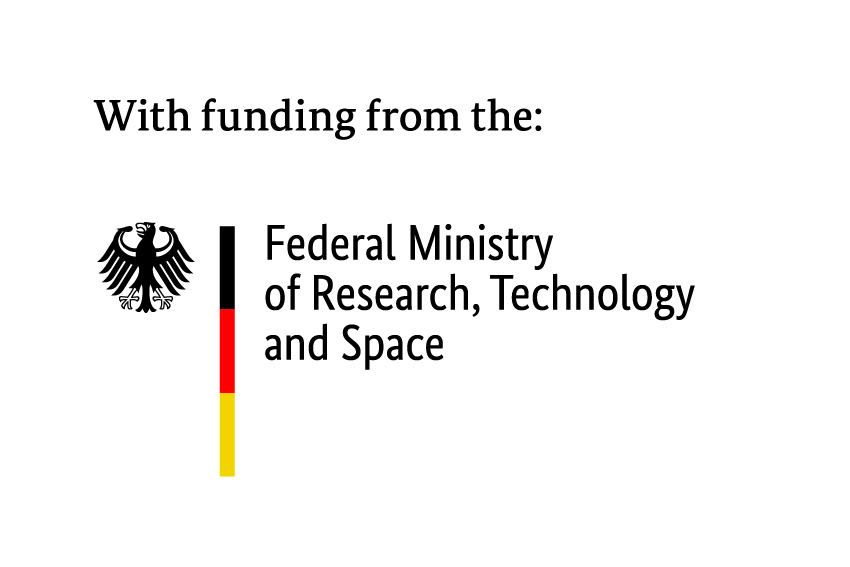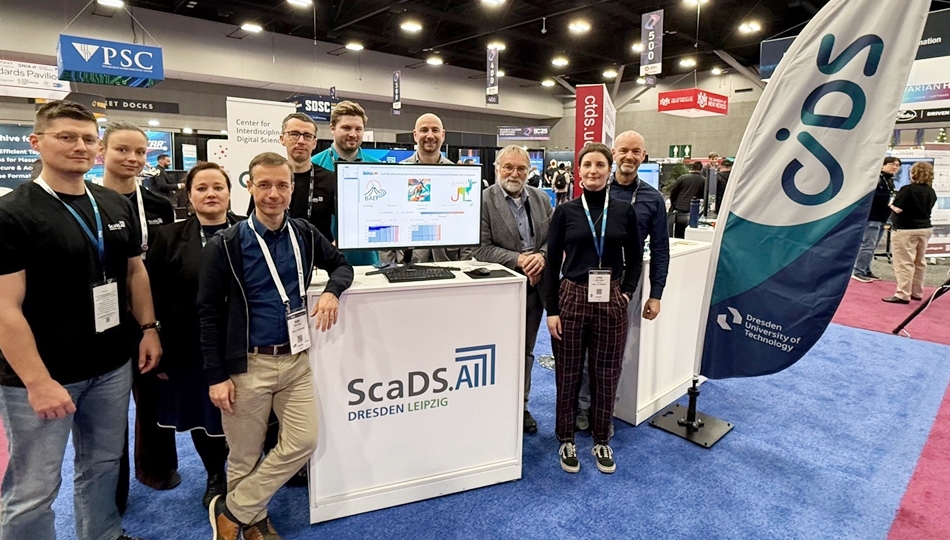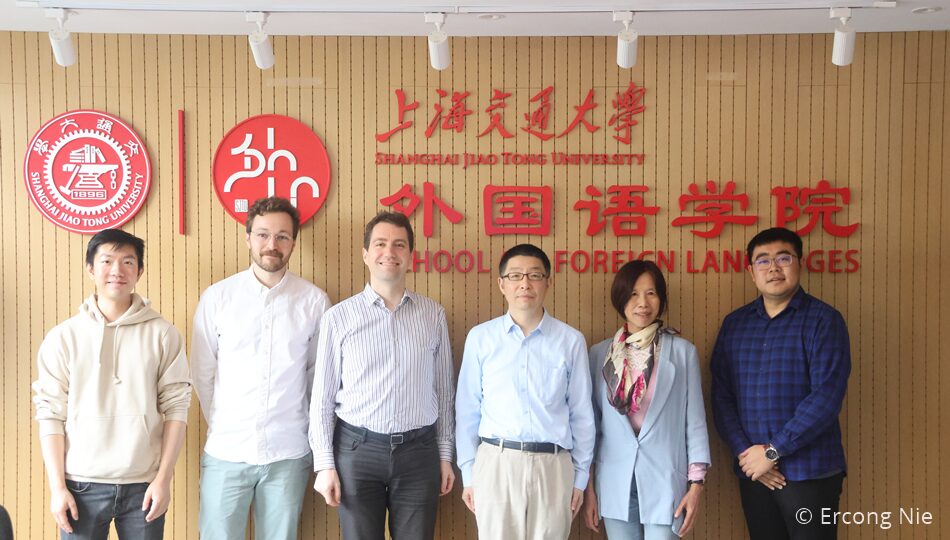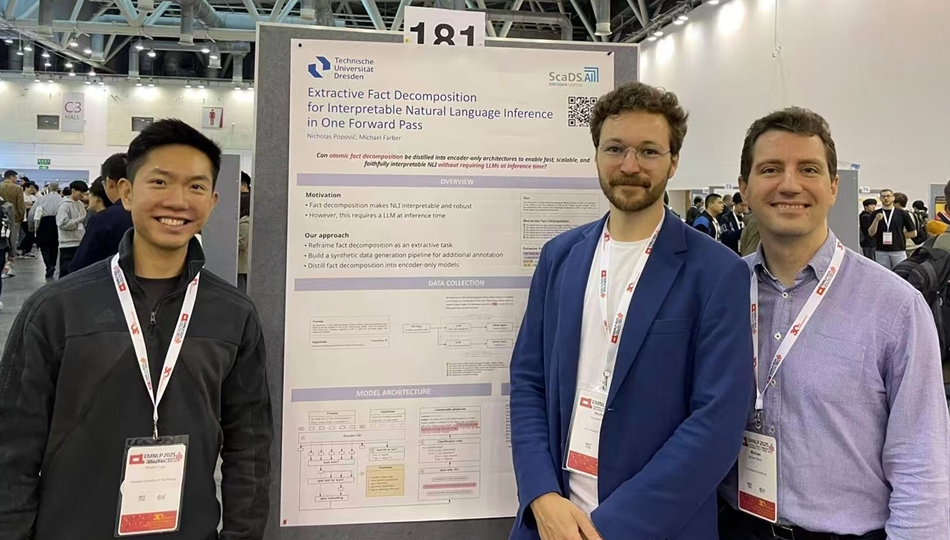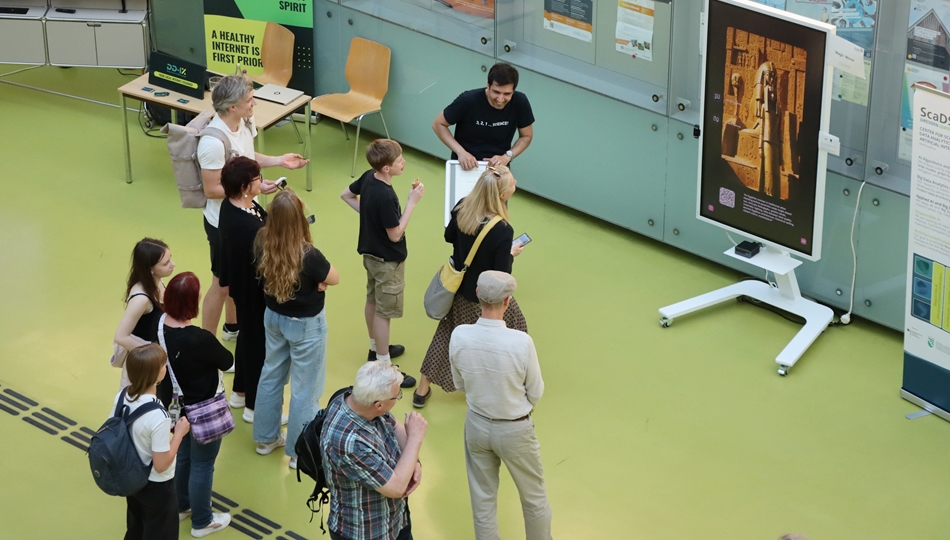
June 24, 2025
Lange Nacht der Wissenschaften 2025: Explaining Science to the Public

On June 20, 2025, Lange Nacht der Wissenschaften (Long Night of Science) 2025 took place in Dresden and Leipzig. The Living Lab at both locations opened its doors to invite the public to a night of science, fun, and learning. Our team was excited to once again welcome many interested visitors of all age groups and experience levels.
Dresden
More than 600 people visited our Living Lab in Dresden between 5 p.m. and midnight. We dedicated each hour to a different demonstrator and therefore gave special insights into a variety of research areas at ScaDS.AI Dresden/Leipzig. In total, we showcased seven demonstrators, with which our visitors got the chance to play around with machine learning, image recognition, image segmentation, large language models and generative AI, as well as virtual reality.
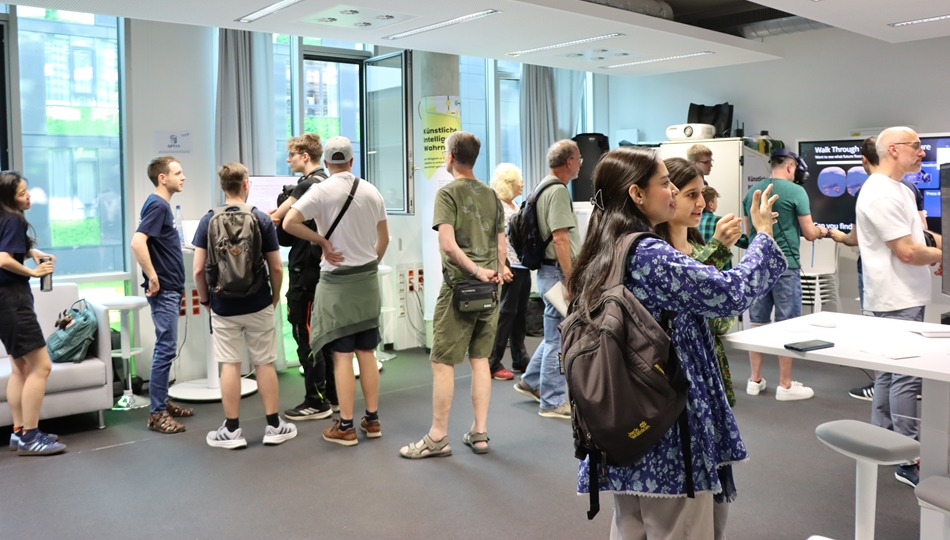
Experience the symphony of your emotions! An interactive Emotion Recognition demo transforms your facial expressions into musical notes in real-time, creating a personalized melody based on how you feel.
Science and art collide as cutting-edge Artificial Intelligence (AI) interprets your emotions and visualizes them in an immersive 3D space. Discover the sounds of your smile, the tunes of your thoughts, and the harmony of human expression
How does a computer learn to classify things into categories, such as animals into the groups “fish”, “mammals” and “birds”? How exactly does this work in machine learning?
We slip into the role of a computer ourselves and find out how it learns from data step by step. What happens when it’s not quite clear? We see how the computer solves tasks that often seem quite simple to us humans
It is estimated that between 10 and 17 million people in Germany have reading difficulties, including functional illiterates and people with reading and writing disorders and mental impairments. In the course of internationalization, the number of non-native speakers has also increased in recent years. All of these people could benefit from texts written in easy-to-understand language.
Get to know the “Klartext”, a software that makes it possible to translate (scientific) website content into easy-to-understand language. Target groups include the general public, journalists, students and academics as well as experts from industry.
What facts do large language models believe in? chatGPT and co. are impressive in many applications, but what facts are their answers based on? In the GPTKB project, researchers extract and visualize massive amounts of facts from large language models.
Large language models (LLMs) have greatly advanced artificial intelligence (AI) and natural language processing (NLP). In addition to their ability to perform many different tasks, their great success lies in the fact that they have a lot of factual knowledge. For years, researchers have always been interested in how much these models really “know”, but previous methods only work with small, pre-selected data, which leads to an “availability bias” (Tversky and Kahneman), meaning that researchers often only discover what they already expected – and may miss a lot.
To solve this problem, we have developed a new method with which we can systematically and comprehensively capture the knowledge of an LLM. To do this, we ask it many questions and intelligently summarize the answers.
As a test run, we used GPT-4o-mini to create GPTKB – a huge collection of knowledge with 101 million facts about 2.9 million subjects. Best of all, we did the whole thing for just 1% of the cost of previous projects!
GPTKB is a significant step forward in two areas: First, it helps to better understand how LLMs “think” and what facts they know. Secondly, it shows new, efficient ways to create large knowledge collections.
The precise observation of the traffic situation in autonomous driving or the detection of diseases on X-ray images – there are more and more practical applications in which computers have to “see”. But how does this work?
Distinguishing objects from one another in images is a very difficult task for computers – because an image only consists of a number of pixels. These pixels are arranged in a grid, which the computer can break down into individual parts in order to assign individual pixels to an object in the image – for example a tree trunk, the crown of a tree or the sky in the background. In this process, similar pixels remain together, while pixels that differ from each other are separated. In this way, the computer is able to distinguish individual objects from one another.
The multicut problem in computer science describes the task of cutting up a network of pixels as perfectly as possible – a major challenge! Researchers at TU Dresden have developed an algorithm that can solve this task as efficiently as possible. Compete against the computer and try to solve the problem yourself in our multicut game. Various levels of increasing difficulty are available. Can you find the best solution?
Climate change is causing a change in global weather conditions. As temperatures rise, extreme weather events are becoming more frequent and their effects more severe, such as flooding. We are investigating the connection between climate change and flood risks. One of these research projects is FloodVis. FloodVis lets you experience 25 different flood scenarios in a virtual city.
We offer you a protected space to move around in a virtual city at the time of flooding. You have the opportunity to experience the effects of the flood over time. FloodVis not only shows the status of the flood, but also displays the damage to buildings in an impressive way.
FloodVis is an experience in virtual reality (VR).
How do machines learn? We present asanAI – a software with which you can experiment with machine learning without any prior knowledge.
We will give you a comprehensive introduction to our open source software asanAI and answer all of your questions so that you can continue working on your own from home afterwards. All you need is an internet-enabled laptop or cell phone to train an AI model on your own images, webcam data, CSV files or any tensor data for your use case – without ever leaving your browser.
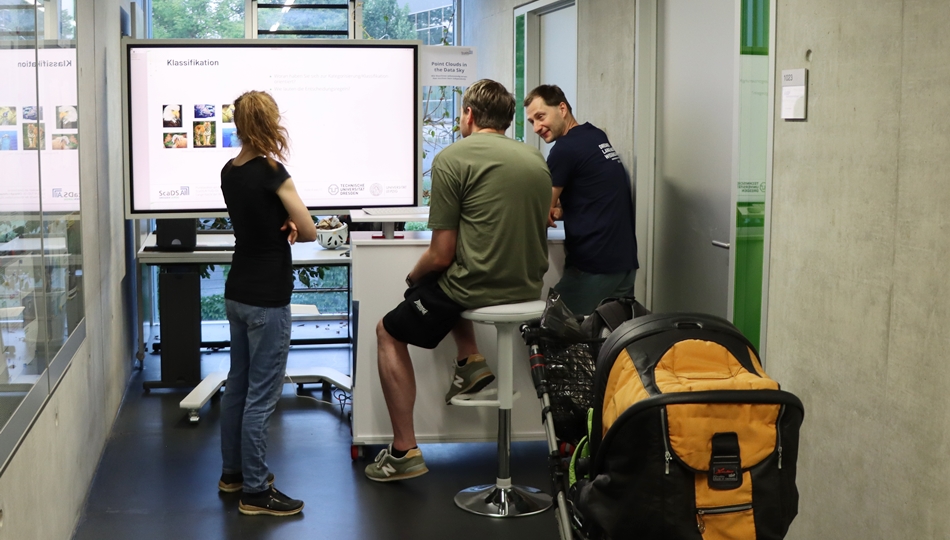
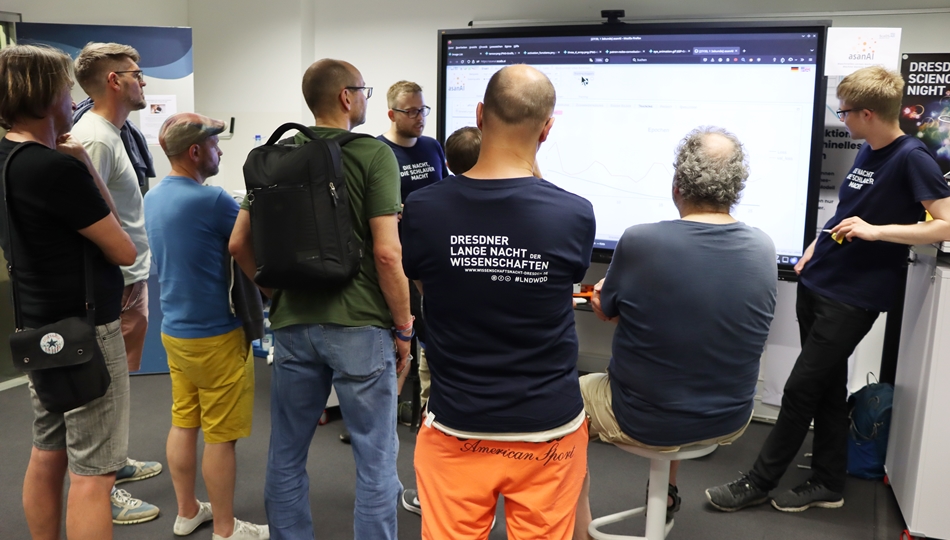
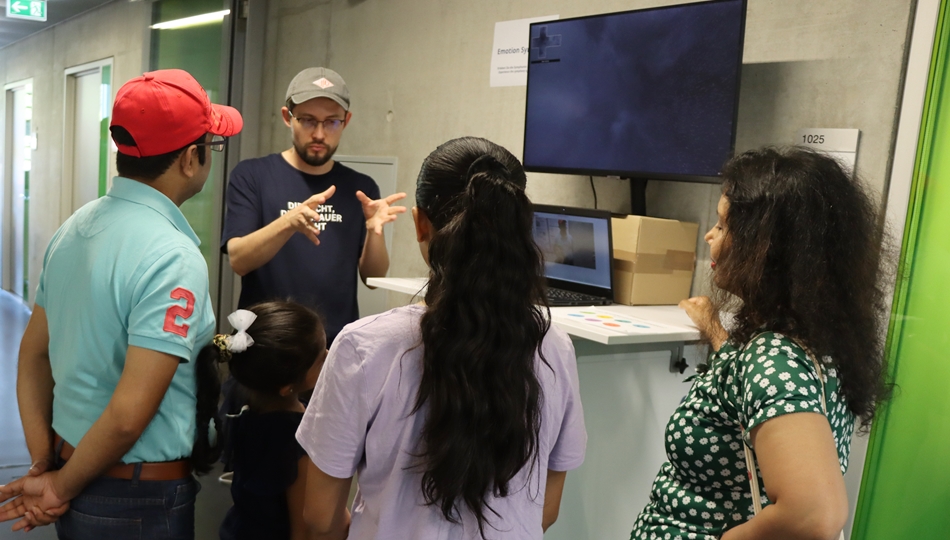
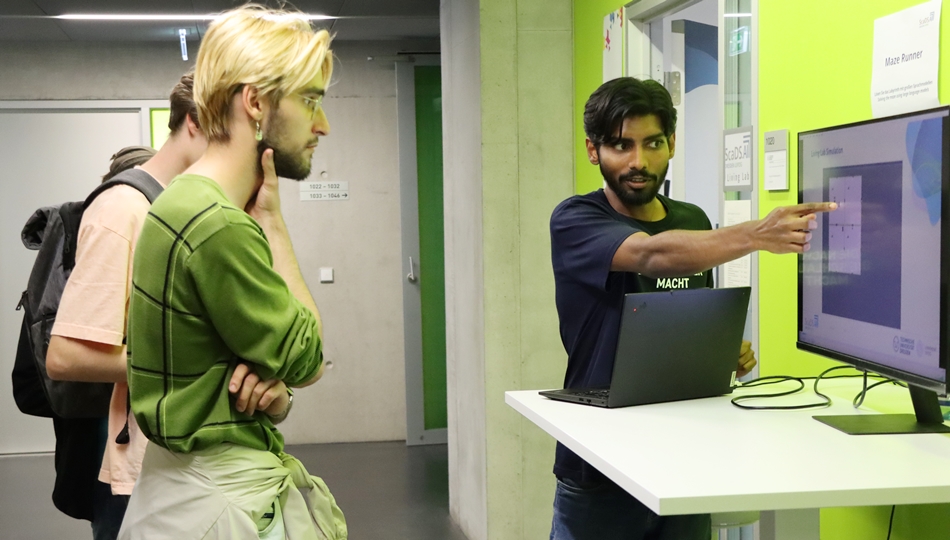
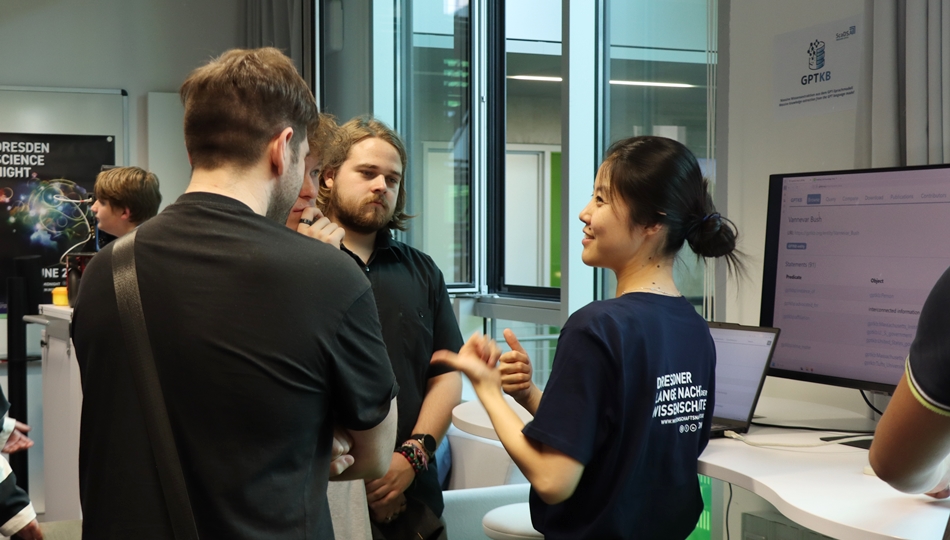
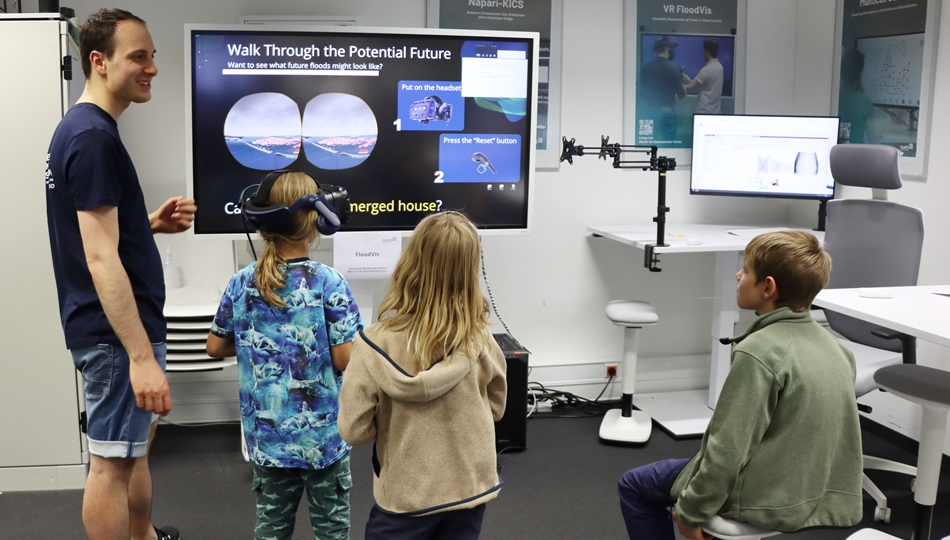
Leipzig
In celebration of the Lange Nacht der Wissenschaften 2025, ScaDS.AI Dresden/Leipzig offered a special glimpse into the world of AI at its Leipzig location from 5 p.m. to 10 p.m. Through numerous demonstrations and workshops, around 350 visitors experienced the many facets of this fascinating technology.
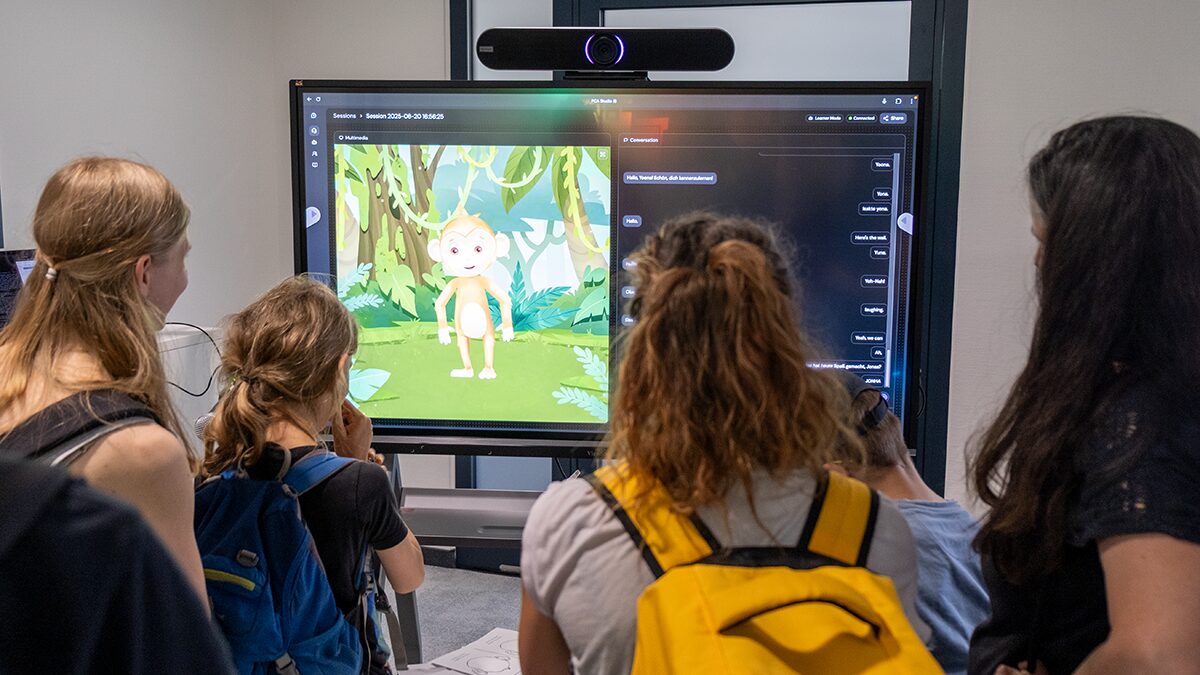
Workshops
Our team in Leipzig offered inspiring workshops on topics such as mathematics combined with music, Generative AI and data literacy.
Imagine if Pythagoras had run a recording studio – what would the result have been? Find out for yourself and turn mathematical equations and dry fractions into rhythms and melodies in this interactive workshop! Here you will learn how to make music with fractions and how to understand mathematics with music.
Modern AI-based chat applications such as ChatGPT, Gemini, Claude and others seem to be inevitably changing the way we work. For many, this means writing or programming more efficiently. Some overestimate the quality of generated text. They are sometimes embarrassed to admit that they have not curated AI-generated text properly. While 20 years ago we had to learn how to “google” properly, today we learn how to “prompt” properly. In this hands-on talk we will gain an insight into the various challenges that current advances in AI technologies present us with. But we will also look at the numerous opportunities they offer us.
Whether it’s photos on your computer, health data or huge research datasets – data management, data security and data quality are issues that affect us all. In this interactive session, we will show that the conscious handling of data is not only important for science. Personal chaos in everyday life can also be reduced. What happens when research data is improperly documented or manipulated? Using real “horror cases” from science, we show how a lack of data literacy and disregard for the FAIR principles can lead to serious errors and misinformation. We at Come2Data show you how smart data practices – from the small things in everyday life to the big things in research – can make the difference between insight and disaster.
Demonstrators
From 5:00 p.m. to 10:00 p.m., visitors to the Living Lab in Leipzig could discover our numerous demonstrators. They experienced a robot dog that obeyed commands and a mirror that put on the outfit you wanted without you having to undress. Furthermore those present were able to take a journey through time into the heart of a glacier as well as math lessons set to rhythm and beat. Also popular were der voice cloning station and the application Uku, where a digital monkey helped users to understand and express their feelings.
Generative AI models, such as ChatGPT, have a lot going for them, but did you know that they can also be used to virtually change your clothes or even transport you to a fantasy world? The magic mirror developed by ScaDS.AI Dresden/Leipzig combines various AI technologies such as image classification, speech recognition and image generation to show you in a new matching outfit or in a fantasy world of your choice. Whether you’re looking for inspiration for a new style or just want to try something out – you can test it live here.
An insight into research in earth and environmental sciences at ScaDS.AI: How can the movements of glaciers be measured and better understood? Our demonstrator shows how seismometers record even the smallest changes in the ice and how this data is analyzed using artificial intelligence. This gives researchers valuable insights into the behavior of glaciers and the effects of climate change.
Voice cloning or mimicking with AI – is it that easy, what does it take and what do “deep-fakes” have to do with it?
Sit, down, heel – our four-legged robot dog can listen to your commands and follow them. Here you can experience at first hand how our robot explores its surroundings using voice models and object recognition! This intelligent walking robot responds to your commands and recognizes obstacles. Come along and try it out for yourself
Uku, our AI-controlled digital monkey, takes not only children but also curious adults on a turbulent rollercoaster ride of emotions through “Ukuland”. In this interactive world, the landscape and weather change according to Uku’s feelings – a unique approach to helping children understand their own feelings and those of others. Uku communicates like a trained kindergarten teacher in age-appropriate language and teaches emotional intelligence and empathy through playful learning. Experience how modern technology turns early childhood education on its head and also amazes adults!
Have you always wanted to know what a Taylor Swift or Pink Floyd song looks like as a mathematical formula? Or create your own techno song and learn math at the same time? With the Play My Math app, you have the opportunity to try out an innovative educational technology for school lessons and make numbers dance. Imagine Pythagoras running a recording studio and let yourself be surprised.
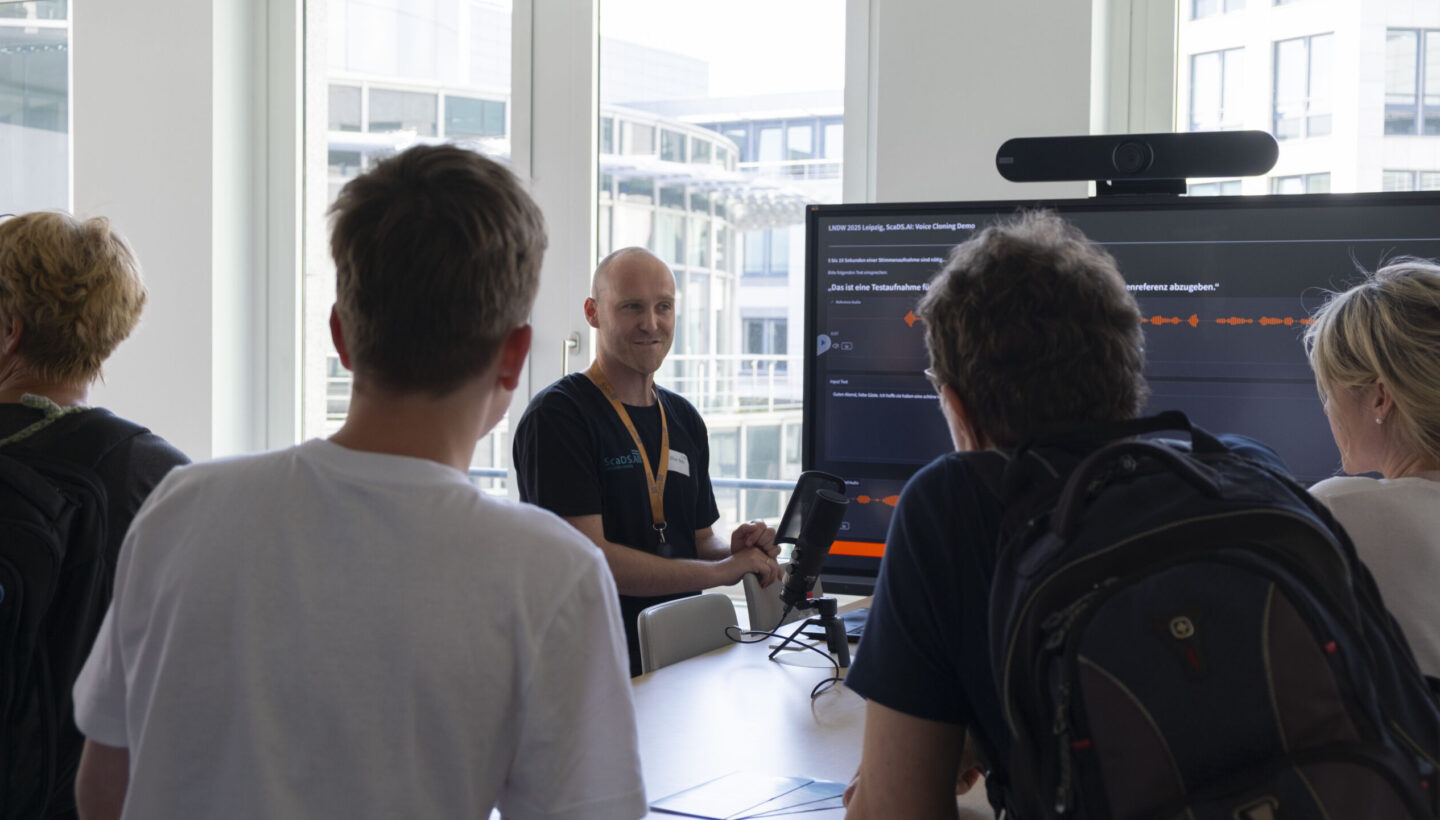
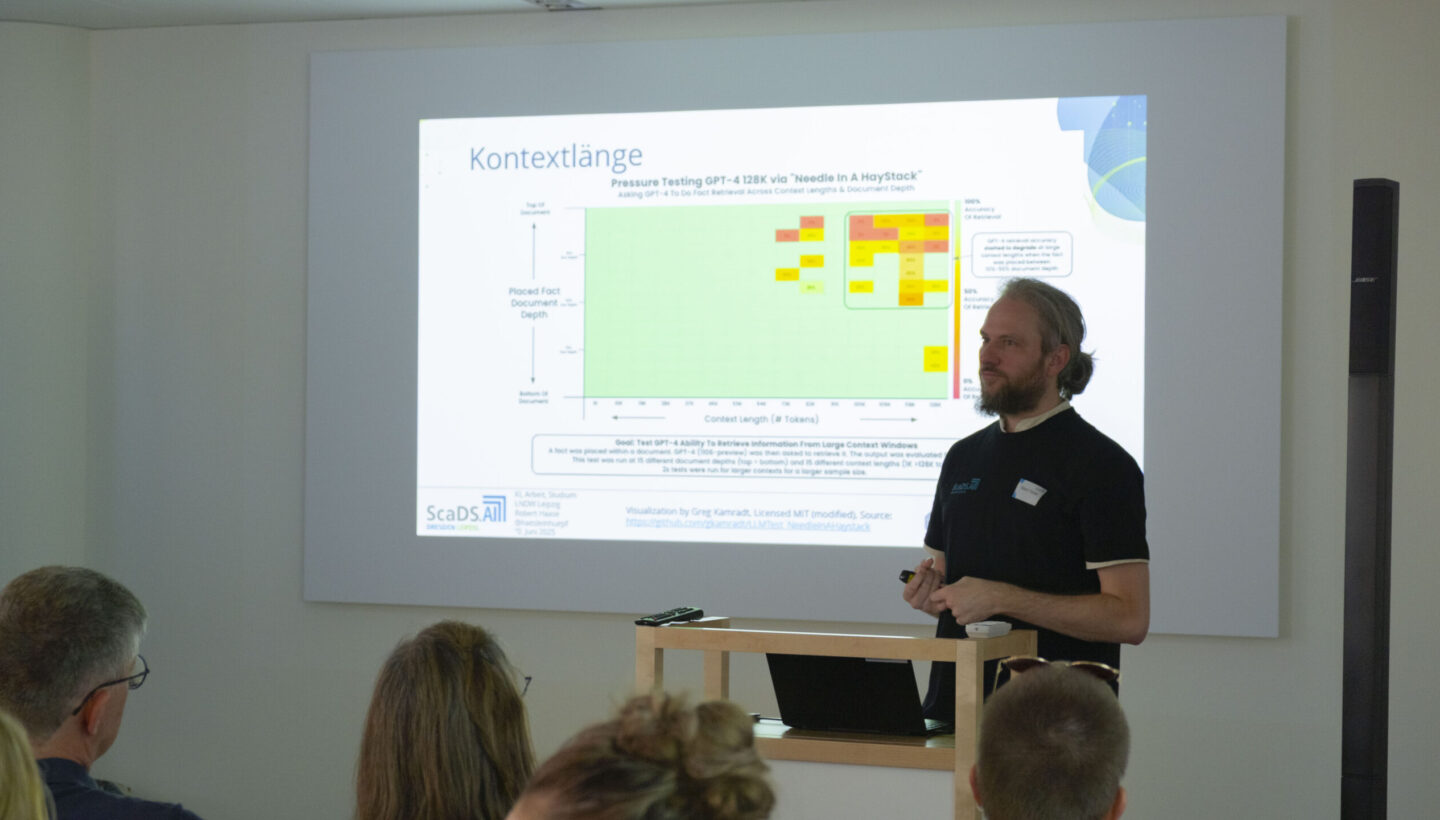
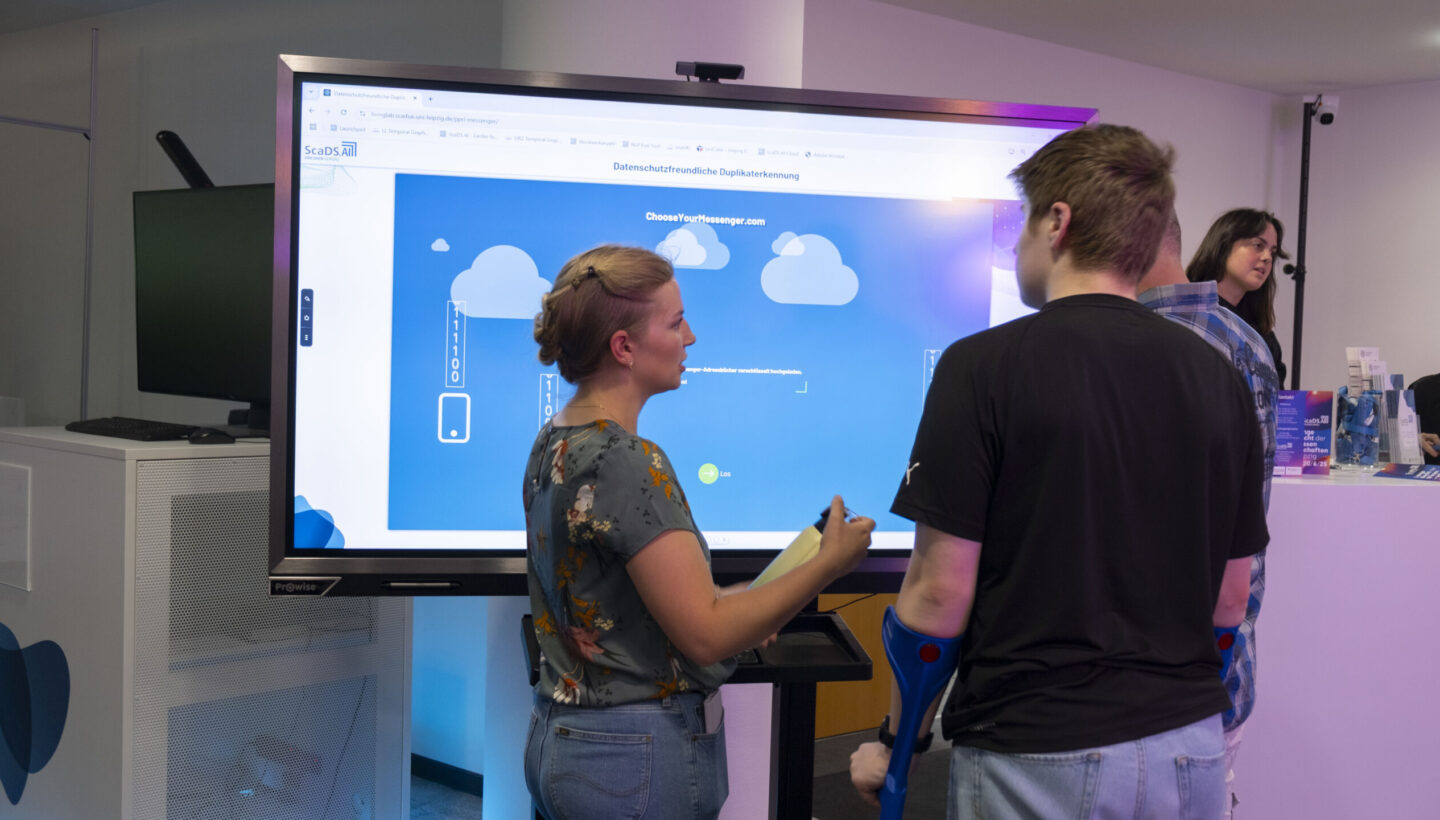
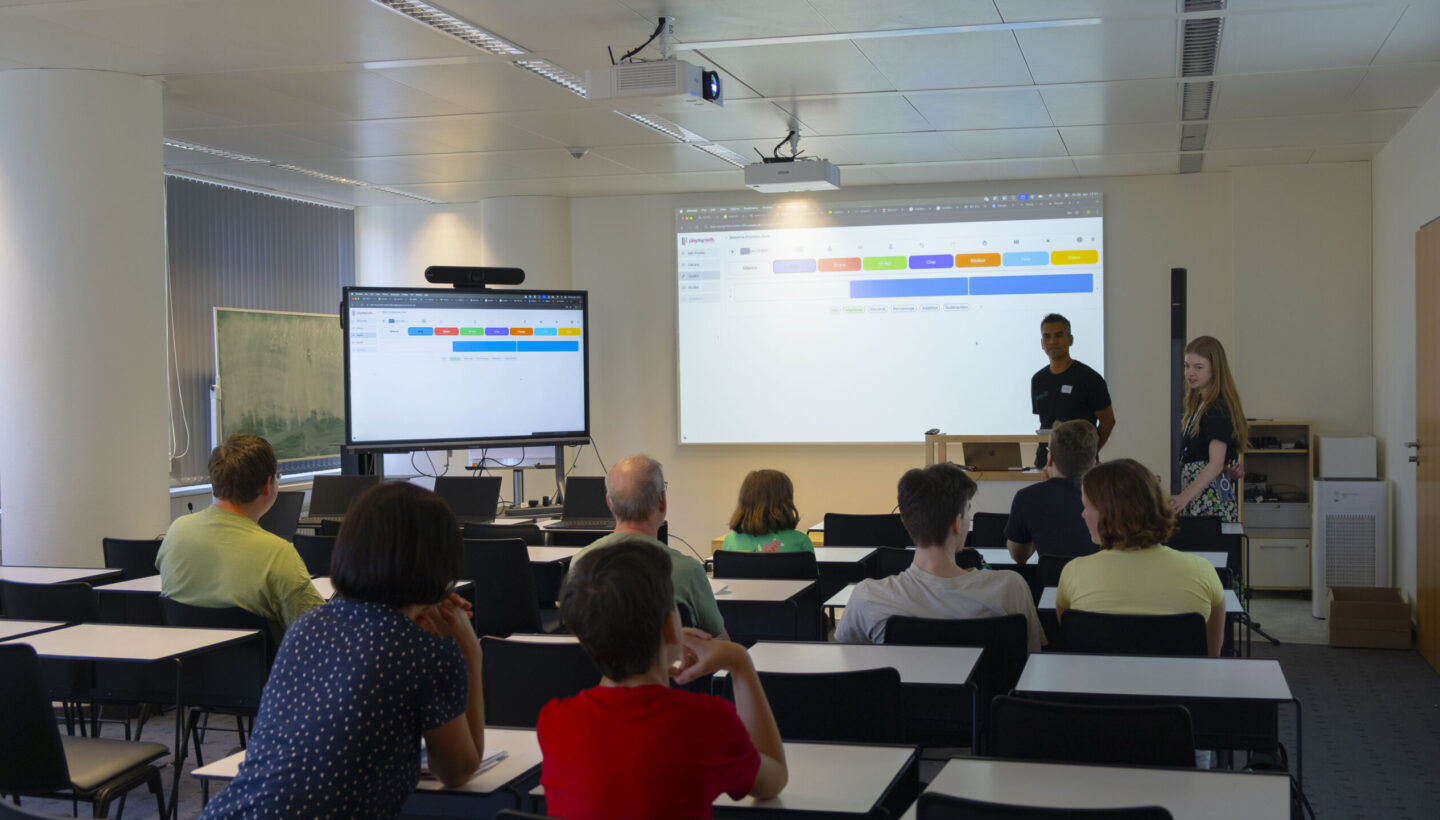
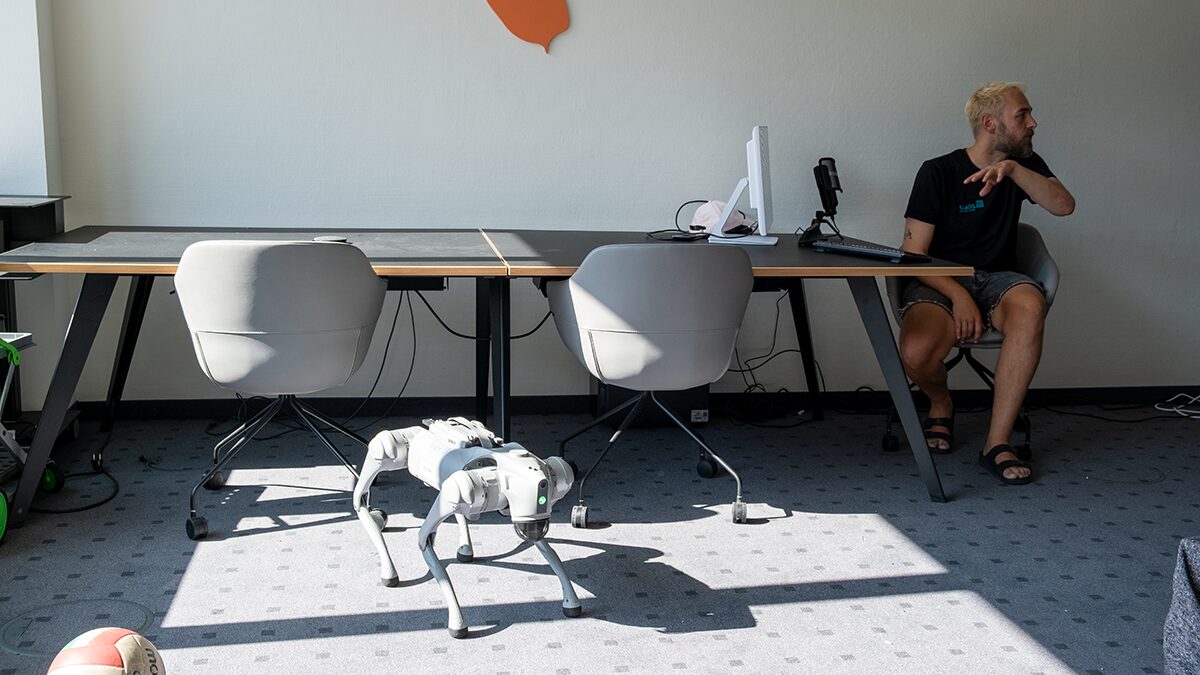
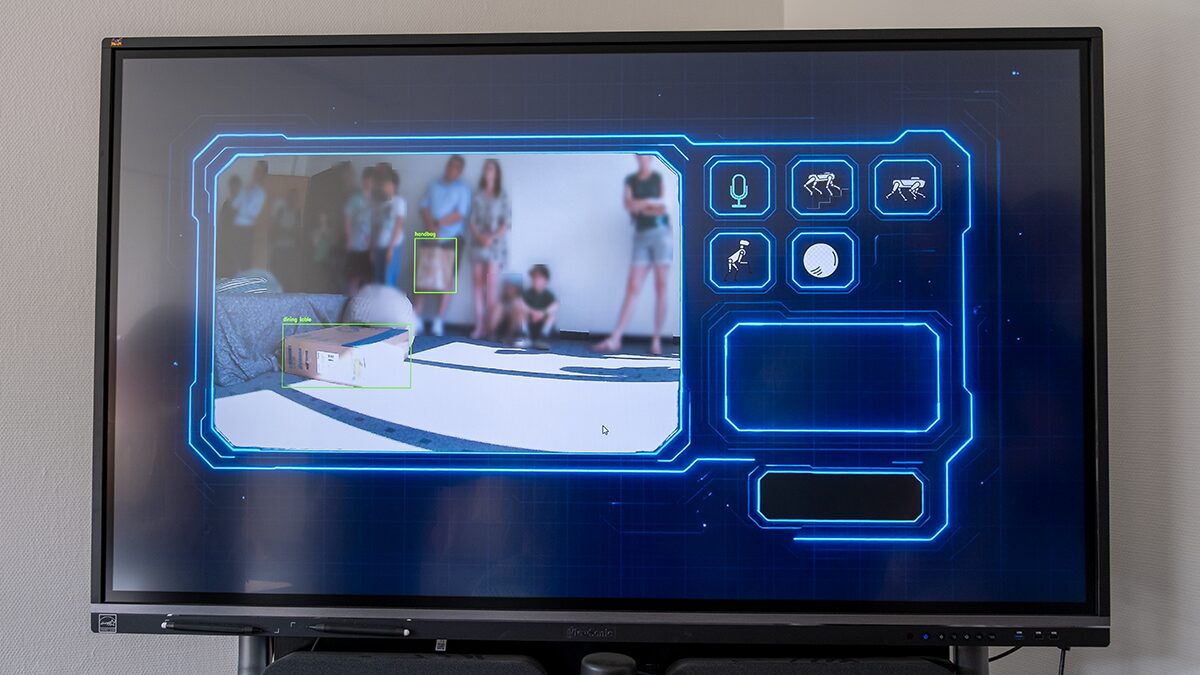
Lange Nacht der Wissenschaften
Lange Nacht der Wissenschaften is an annual event that allows the public to learn more about the world of research. Researchers at universities or other research institutions share their expertise on a scientific topic with lectures, exhibitions or demonstrators. It is organized in many cities in Germany, including Leipzig and Dresden. For years, ScaDS.AI Dresden/Leipzig has participated in this event to make AI and related technologies more graspable to the public. We are looking forward to continue our contribution in the future.
